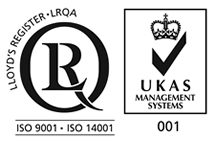
Main Products
Copyright 1998-2025 Firmetal Group All Rights Reserved. | Sitemap
From the perspective of reducing the cost of niobium-based alloy powder, fine master alloy powder was prepared through the technologies of electron beam melting, hydrogenation and dehydrogenation. The mixed powder of fine master alloy powder and pure niobium metal powder was used as the raw material to prepare niobium-based alloy, which significantly reduced the cost of raw material powder. The large chemical composition gradient between the master alloy powder and the pure niobium metal powder is utilized to provide a driving force for the migration of alloying element atoms, achieving the alloying effect. Meanwhile, the sintering temperature is reduced and the sintering deformation of niobium-based alloys is decreased by taking advantage of the characteristics of fine master alloy powders, such as large specific surface area, large lattice distortion and high sintering activity. This method has a simple preparation process and a relatively low preparation cost.
The alloying elements in niobium-based alloys are pre-fabricated into master alloys, and then the master alloys are hydrogenated. The hydrogen absorption is controlled by controlling the cooling rate during the cooling process, so that the master alloys have different crushing effects to prepare powders of different particle sizes. During the dehydrogenation process of hydrogen-absorbing powder, the amount of hydrogen removed is controlled by regulating the dehydrogenation temperature and time, aiming to retain some hydrogen in the powder and facilitate the control of oxygen content during degreasing and sintering processes. Partially dehydrogenated master alloy powder will completely remove hydrogen during the degreasing process, and the dehydrogenated alloy has excellent sintering activity. It can not only effectively reduce the oxygen content but also enhance the strength of the degreased green body. Compared with the rotating electrode atomization process, the temperature of hydrogenation and dehydrogenation is lower, the process is simpler, and the cost of master alloy powder is significantly reduced. Using master alloy powders with high alloying element content and pure niobium powders as raw materials can effectively reduce the cost of raw material powders. Moreover, it can give full play to the advantages of fine particle size powders, such as high sintering activity and easy densification, and expand the alloying pathways. The specific surface area and lattice distortion of the master alloy powder are large, and the chemical composition gradient between it and the base powder niobium is large, providing a driving force for atomic migration during the sintering process, which is conducive to reducing the sintering temperature and minimizing the sintering deformation of components. Therefore, this method is a low-cost approach for preparing niobium-based alloys.